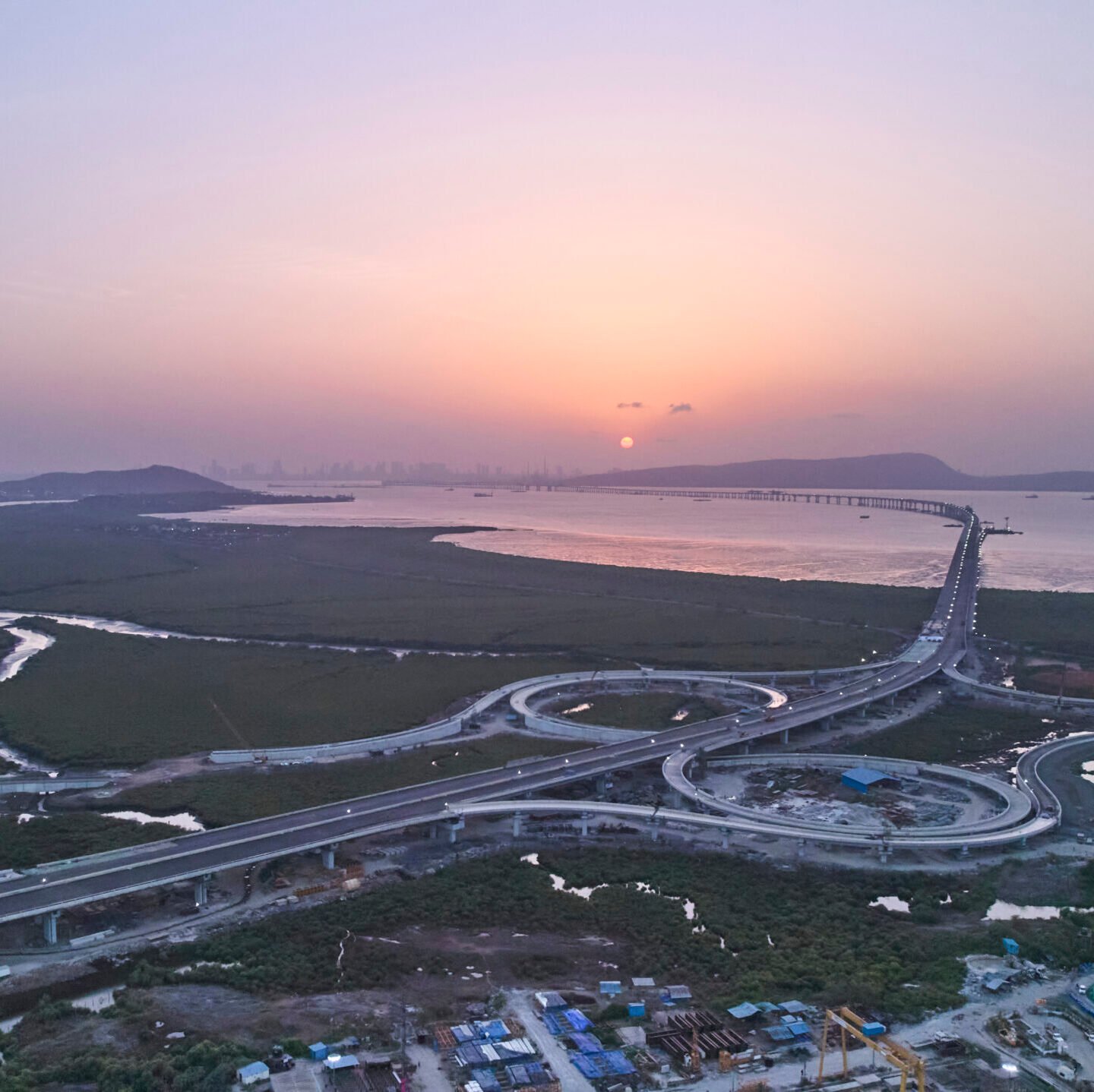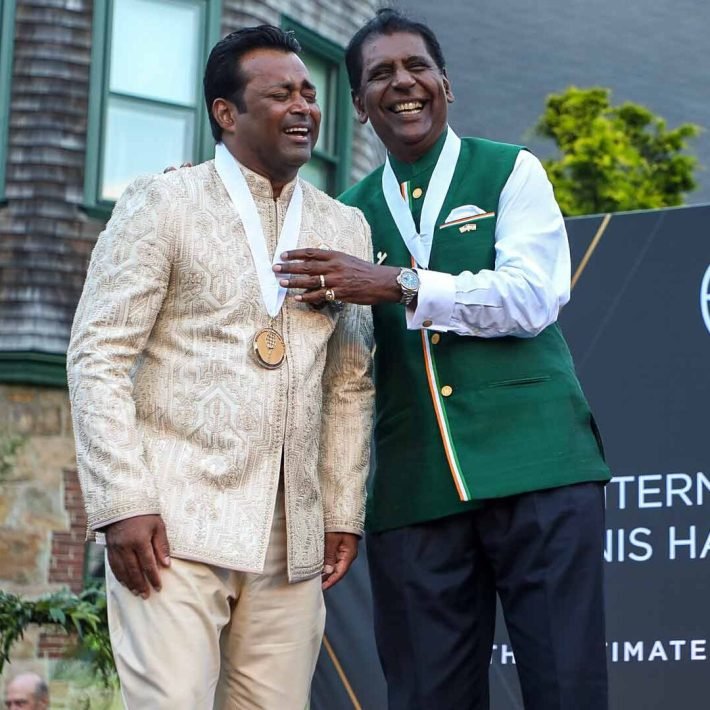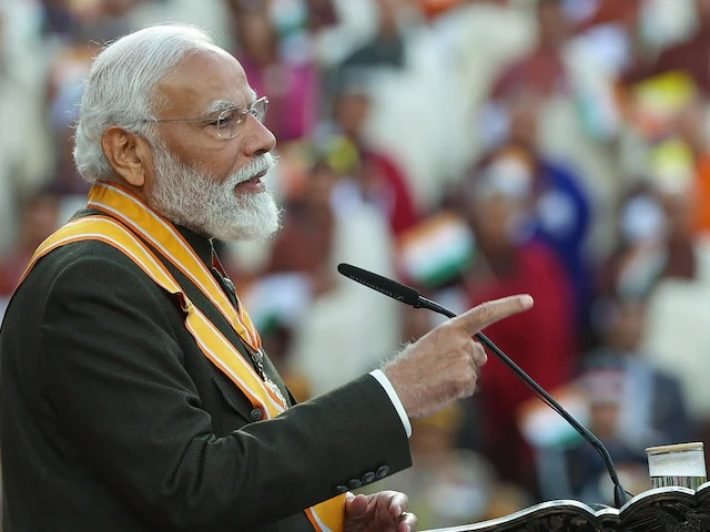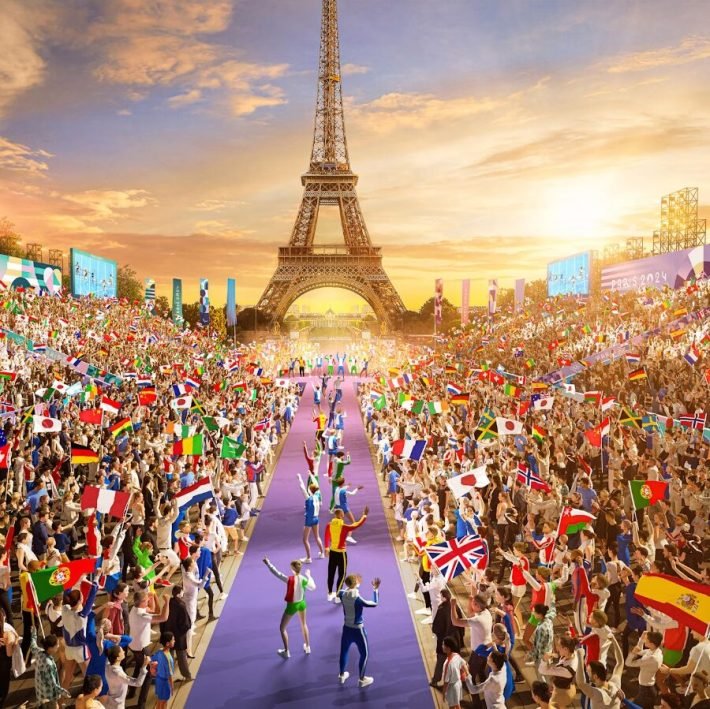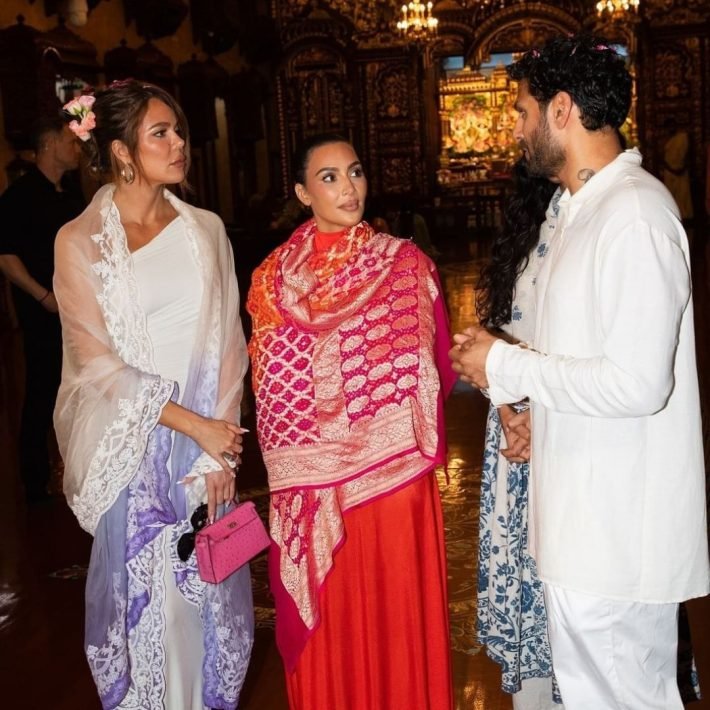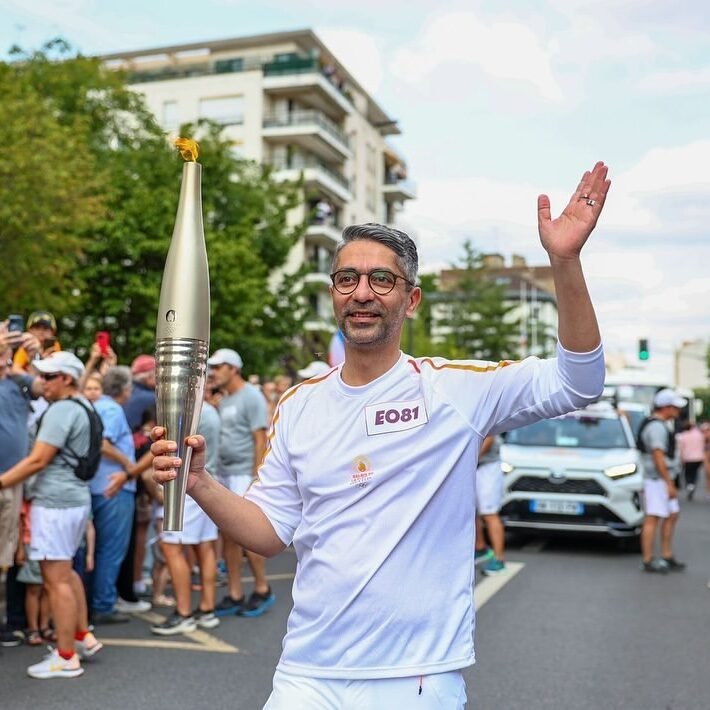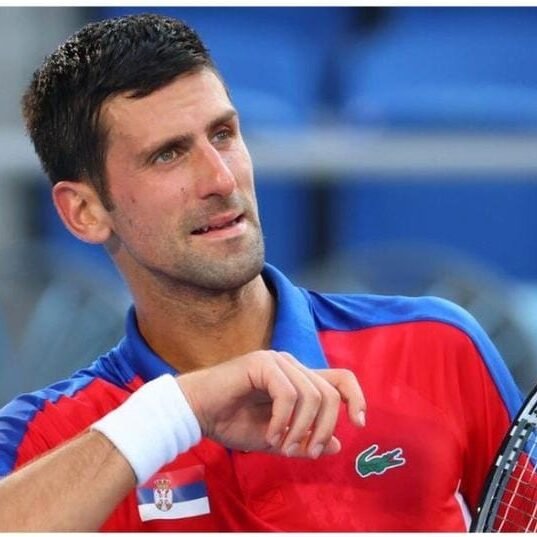The Mumbai Metropolitan Region Development Authority (MMRDA) Is Making Leaps Toward Helping Build A Better & Brighter Nation.
The Mumbai Metropolitan Region (MMR) is indeed a thing to behold. Whether you have been fortunate enough to call this bustling metropolis – which spans over 6,328 sq km – home, have relocated here, or are merely passing through, the undeniable allure of this fast-paced city is impossible to ignore. However, it is crucial to acknowledge that sustaining the exponential growth of MMR is no mean feat.
In this regard, the Mumbai Metropolitan Region Development Authority (MMRDA) deserves commendation for its remarkable efforts in meticulously planning and executing the development of Mumbai and its surrounding suburbs. MMRDA’s unwavering dedication and strategic vision have played a pivotal role in shaping the city’s landscape and ensuring its continued progress. Maharashtra’s Chief Minister, Eknath Shinde has expressed, “Maharashtra is leading the nation in terms of enforcing sustainable urban development with the Mumbai Metropolitan Region as its crown jewel.
The MMRDA’s commitment and efforts towards supporting the Government of Maharashtra’s vision for promoting economic growth across the state by strategically navigating critical factors like urbanization, infrastructure, and sustainability is commendable.” The MMRDA’s goal is to extend infrastructure to remote areas to promote inclusive development. Improved connectivity reduces travel time and transportation costs, benefiting both individuals and businesses. “MMRDA is implementing several projects in the Mumbai Metropolitan Region like the metro, flyovers and roads to reduce traffic congestion, and the Atal Setu. Their efforts will help spur economic and social growth in Maharashtra and bring us closer to achieving our vision for the state,” stated, Maharashtra’s Deputy Chief Minister, Devendra Fadnavis.
This visionary approach has paved the way for the creation of vibrant city centres and revitalised previously overlooked areas.“The MMRDA’s efforts in undertaking projects that are redefining mobility in the Mumbai Metropolitan Region are commendable. We are already seeing how the Metro is making a difference and eagerly anticipate the convenience and efficiency that the new metro lines will bring, as well as the reverberating impact on economic and social growth,” said Maharashtra’s Deputy Chief Minister, Ajit Pawar. In a bold and resolute tone, the MMRDA stands as a beacon of progress, a testament to the power of visionary planning and unwavering determination. It has emerged as a catalyst for progress, paving the way for infrastructure development to not just improve the current quality of life, but to also make a longterm investment in the future generation.
Taking Charge
Between 2014 and 2019, Devendra Fadnavis, serving as the Hon. Chief Minister of Maharashtra at that time, took the initiative to build up and improve infrastructure in the Mumbai Metropolitan Region (MMR). The goal was simple — ease travel and communication, and offer safer modes of transport. He rapidly galvanised the work on the Metro; as Line 1 began in 2014 and Line 2A was commissioned in 2022. During his tenure as CM, he also focused on improving highways, bridges and other facets of infrastructure.
Similarly, the Hon. Chief Minister of Maharashtra, Eknath Shinde, served as the Minister for Public Works Department (Public Undertaking) in the Devendra Fadanvis Government and then as the Urban Development Minister in the Maha Vikas Aghadi Government between November 2019 and June 2022, and was very focused on developing the MMR.
Today, Shinde and Fadnavis, in their new roles as Chief Minister and Deputy Chief Minister of Maharashtra respectively, continue to be passionate about changing the face of the MMR and connecting Mumbai to other regions in and around the city. The Metro Network across MMR, Shivadi-Nhava Sheva Trans Harbour Link (MTHL), and Virar-Alibaug Multi Modal corridor are some of the most ambitious projects which are in various stages of development. These and other projects are going to change the face of Mumbai and MMR, and make it a truly international city. Their goal continues to be to put the people first and exponentially develop the MMR, so that its citizens may lead dignified and prosperous lives.
Plan Of Action: Regional Plan For Mumbai Metropolitan Region
The Mumbai Metropolitan Planning Committee (MMPC), formed in 2008, took the time to carefully study the issues that MMR was faced with and prepared five group reports that established the status of the region – where it was thriving and where improvements were most desired. Based on these reports projections up to 2036 were made.
Based on the suggestions and objections received and the Planning SubCommittee’s Report – after following the procedure laid down under the MR&TP Act, 1966 – the MMRDA submitted the modified draft of the Regional Plan to the MMPC, which approved the same with appropriate modifications and submitted it to the Government of Maharashtra for sanction. A part of the Regional Plan, 2016-36 pertaining to the Matheran Eco-Sensitive Zone was sanctioned on 7th August, 2019. While the rest was sanctioned on 20th April, 2021, and was put in force on 20th June, 2021.
Unleashing Potential: New Growth Centres and Industrial Growth Centres
Mumbai Metropolitan Region is a place where endless possibilities abound. Each year, a multitude of individuals are drawn to this bustling metropolis, to fulfill their aspirations. Acknowledging this constant influx, the MMRDA has embarked on an innovative project aimed at fortifying its socio-economic structure. This visionary initiative encompasses the establishment of two pivotal Growth Centres and three Industrial Growth Centres, complemented by an additional Growth Centre under the purview of its Special Planning Authority in Kalyan.
Kharbav Growth Centre
The first Growth Centre is the Kharbav Growth Centre, strategically located in Bhiwandi Taluka near Bhiwandi Nizampur City Municipal Corporation. This area is attracting significant investment due to major infrastructure projects such as the Virar-Alibag Multi-Modal Corridor (MMC), the Mumbai-Ahmedabad High-Speed Rail (HSR), and Western Dedicated Freight Corridor, connecting Dadri in Uttar Pradesh with the Jawaharlal Nehru Port in Navi Mumbai and the National Waterway 53, connecting Vasai and Kalyan. Apart from these, a road connecting Thane Ghodbandar Road with the Northern Bhiwandi bypass road via a creek bridge at Kharbav has also been proposed. This road will help improve Kharbav-Thane connectivity as well as with the Mumbai-Vadodara Express Highway. This Growth Centre is likely to attract initiatives like transport and logistics, education, research and development as well as commercial and residential projects.
Poynad Growth Centre
Another significant venture is the Poynad Growth Centre in Alibag Taluka. Its proximity to the nearly completed MTHL and important projects like the Virar-Alibag MMC and the 2nd International Airport make it a promising location for future success. Major infrastructure projects running through this Growth Centre include the Virar-Alibag Multi-Modal Corridor (MMC) and the proposed Pen-Alibag Railway Line.
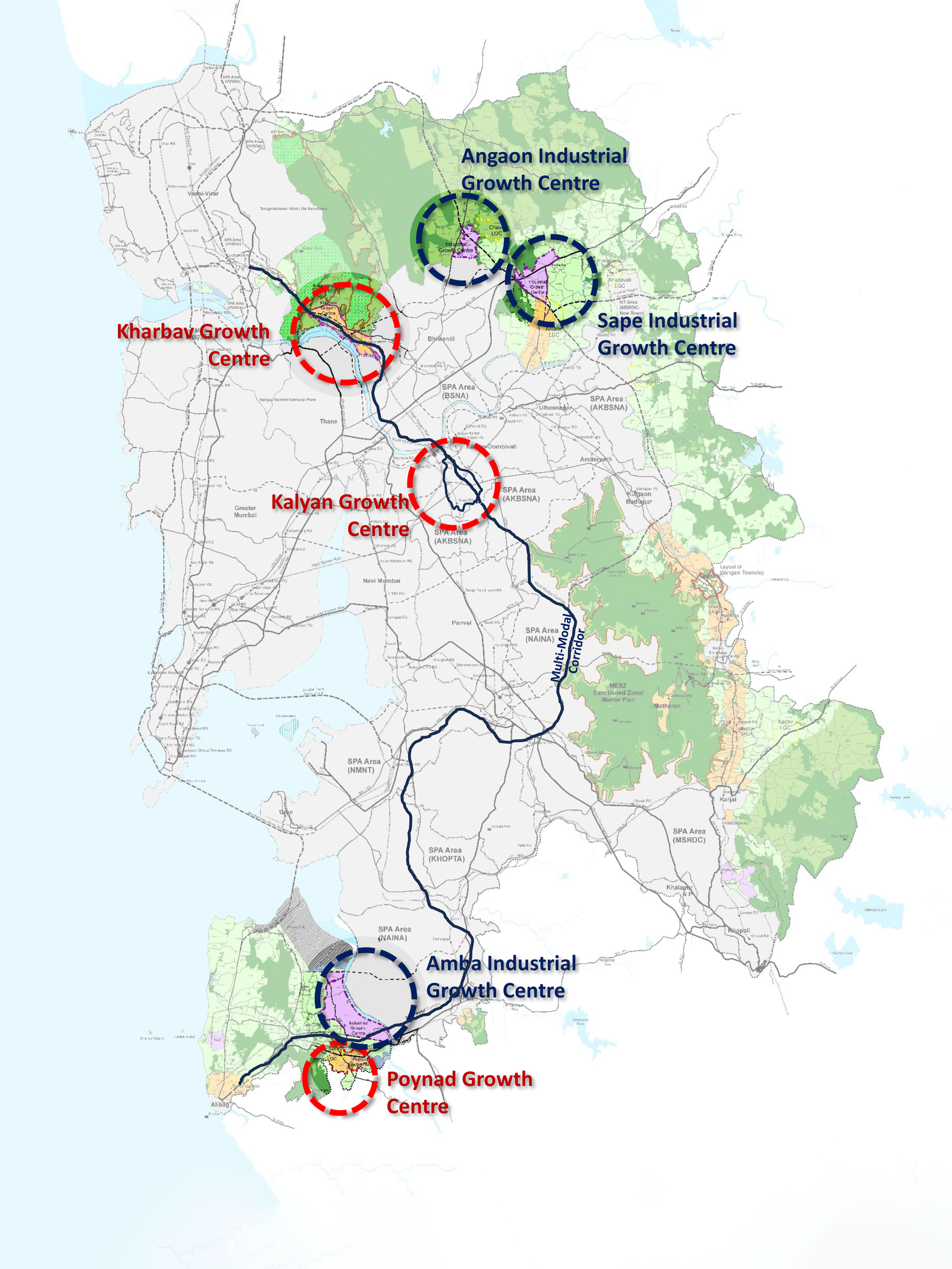
This Centre is set to be a hub for service and cottage industries, tourism, as well as retail, commercial and residential projects.
Kalyan Growth Centre
The Kalyan Growth Centre, under the supervision of the SPA and MMRDA’s Sub-Regional Office in Thane, covers 10 villages in the Kalyan Taluka, spanning approximately 1089 ha. It is set to host major township projects and flourish as a hub for commercial projects, educational institutions, and more. This collective of growth centres aims to bring about comprehensive, sustainable, and robust development within MMR. It will promote economic growth and improve the quality of life for large communities. The initiative promises a future of decentralised development, diverse job opportunities, affordable housing, integrated health and educational infrastructure, and ample green open spaces.
The Industrial Growth Centres
The Regional Plan proposed six Industrial Growth Centres with the objective of dispersing jobs in the region, and generate employment in manufacturing sector. Angaon IGC, Sape IGC, and Amba IGC are expected to drive economic growth in their respective micro-regions. They will enhance employment and connectivity, and contribute to industrial development, especially in the manufacturing sector and high-end industries. The other three Centres, namely Taloje, Khalapur and Khopta are awaiting approval.
Local Growth Centres (LGCs)
The Regional Plan report found that village clusters in regions like the Bhiwandi, Ambernath and Karjat Talukas lacked infrastructure and access to employment. Rural MMR was thus divided into 29 clusters with each cluster in the care of a Local Growth Centre. Seven of these are located in urban peripheries while 13 are already serving as hubs for social and educational needs of villages in the area. 9 LGCs were identified considering availability of land and strategic locations with good access, of these 7 are expected to be developed as LGCs as per the regional plan.
The role of these Local Growth Centres is to primarily serve as local markets, enable economic development compatible with local skillsets, offer skill upgradation and be a point of convergence for Government schemes.
The MMRDA’s new initiative propels us towards a future filled with superior opportunities and infrastructure. The Mumbai Metropolitan Region significantly contributes to the economy of Maharashtra and the entire nation, accounting for about 4% of the country’s GDP. MMR is projected to contribute a staggering 0.35 trillion US Dollars to the Indian economy by 2028. The upcoming Growth Centres are expected to immensely benefit the designated regions.
MMRDA’s Renaissance: Connecting 3rd Mumbai & Transforming The Mumbai Metropolitan Region
Beyond Bridges: Atal Bihari Vajpayee Smruti Nhava Sheva Atal Setu
Transportation is a key area of focus for the MMRDA. In recent years, MMRDA has undertaken significant transport infrastructure projects to improve connectivity and promote Transit Oriented Development. One of them is the Atal Bihari Vajpayee Smruti Nhava Sheva Atal Setu.

The construction of the Atal Setu by MMRDA is set to revolutionise travel between Mumbai and Navi Mumbai-Raigad. Currently, the SionPanvel Road requires a long and time-consuming journey, leading to significant fuel consumption. However, the Atal Setu project, which will be India’s longest sea bridge, aims to connect Sewri in Mumbai to Chirle on NH-4B in Navi Mumbai, ultimately linking to the Mumbai Pune Express Highway and Mumbai Goa Highway
A Major Step Towards Development & Economic Growth
The Atal Bihari Vajpayee Smruti Nhava Sheva Atal Setu will play a vital role in the accelerated development of Navi Mumbai and Raigad district, as well as in alleviating congestion within Mumbai city. It will offer faster connectivity from Chhatrapati Shivaji Maharaj International Airport in Mumbai to the proposed Navi Mumbai International Airport (NMIA). The link will also facilitate shorter travel distances between Navi Mumbai, Konkan, and the two major ports i.e. Mumbai Port and Jawaharlal Nehru Port, thus benefiting trade and commerce.
This ambitious project is expected to generate employment opportunities and foster economic growth in the Mumbai Metropolitan Region. The positive impact of the Atal Setu extends beyond Mumbai and Navi Mumbai, as it will enhance connectivity and boost economic activities in surrounding districts. By easing congestion and providing better accessibility, the Atal Setu will make residential and commercial spots more attractive and affordable. Additionally, it will contribute to savings in fuel consumption and commuters’ time due to improved connectivity with Navi Mumbai and the Konkan region. The Atal Bihari Vajpayee Smruti Nhava Sheva Atal Setu is poised to bring about significant positive changes and shape a brighter future for the MMR.
Currently, commuting between Mumbai and Navi Mumbai takes about two hours, which leads to fuel and time loss. However, with the completion of the the Atal Setu, travel time will significantly reduce, encouraging industrial and urban development, especially in Navi Mumbai and its surrounding areas. Crashing the barriers of geographical constraints for expansion of the maximum city, the real estate industry, tourism, hospitality, and logistics will observe growth outside Mumbai, which is the economic capital of the country.
Leveraging Revolutionary Technology & Design
This iconic bridge is constructed using state-ofthe-art Japanese technology. This project in total is 22 km long, having 3 + 3 lanes with emergency lanes on each carriageway for towing. The design of the project involved the 16.5 km part in the sea and about the 5.5 km part as a viaduct on each side of the land. The bridge has features like Anti-Crash Barriers, an Artificial Intelligence based Traffic Monitoring System, Sound Barriers, LED Lighting that causes no discomfort for birds and more. A selfsupporting steel deck design was used which was time-saving and suitable for the birds. This mega structure is designed to sustain all sorts of natural calamities for the next 100 years. Subject experts from 10 countries and skilled labourers worked round the clock in three shifts to get this project at this stage well in time. This ‘Engineering Marvel’ is designed for vehicles travelling at the speed of 100 mph. The carrying capacity of the road is more than 50,000 – 70,000 vehicles per day.
This bridge is designed taking into consideration the sea traffic experienced due to large vessels, fishing boats, and undersea pipelines carrying crude oil, while maintaining the privacy of sensitive areas such as the Bhabha Atomic Research Centre (BARC), and Oil Terminals of BPCL etc. MMRDA has tried to ensure minimum disturbance to the environmental features like the natural habitat of migratory birds, especially flamingos, mangroves, mudflats and more.
Bridging The Divide: Make The Journey From South Mumbai To Navi Mumbai In 23 mins With The Sewri-Worli Connector
The Sewri-Worli Connector, a crucial component of the Mumbai Trans Harbour Link project, is set to revolutionise transportation in Mumbai. This ambitious project, undertaken by the MMRDA, aims to address the city’s traffic woes and enhance connectivity between South Mumbai and the mainland of the Mumbai Metropolitan Region (MMR). Designed as a state-of-the-art, signal-free, elevated road spanning 4.5 km, the Sewri-Worli Connector will boast two lanes in each direction, totaling four lanes. Its strategic location will seamlessly link three major infrastructure projects: The iconic Bandra-Worli Sea Link, the Atal Bihari Vajpayee Smruti Nhava Sheva Atal Setu, and the Mumbai Coastal Road.
By integrating these critical transport arteries, the connector will offer uninterrupted travel, providing commuters with a smooth and efficient route between key areas of the city. Notably, it will significantly reduce congestion, easing the burden on existing roads and enhancing the overall transportation infrastructure in Mumbai
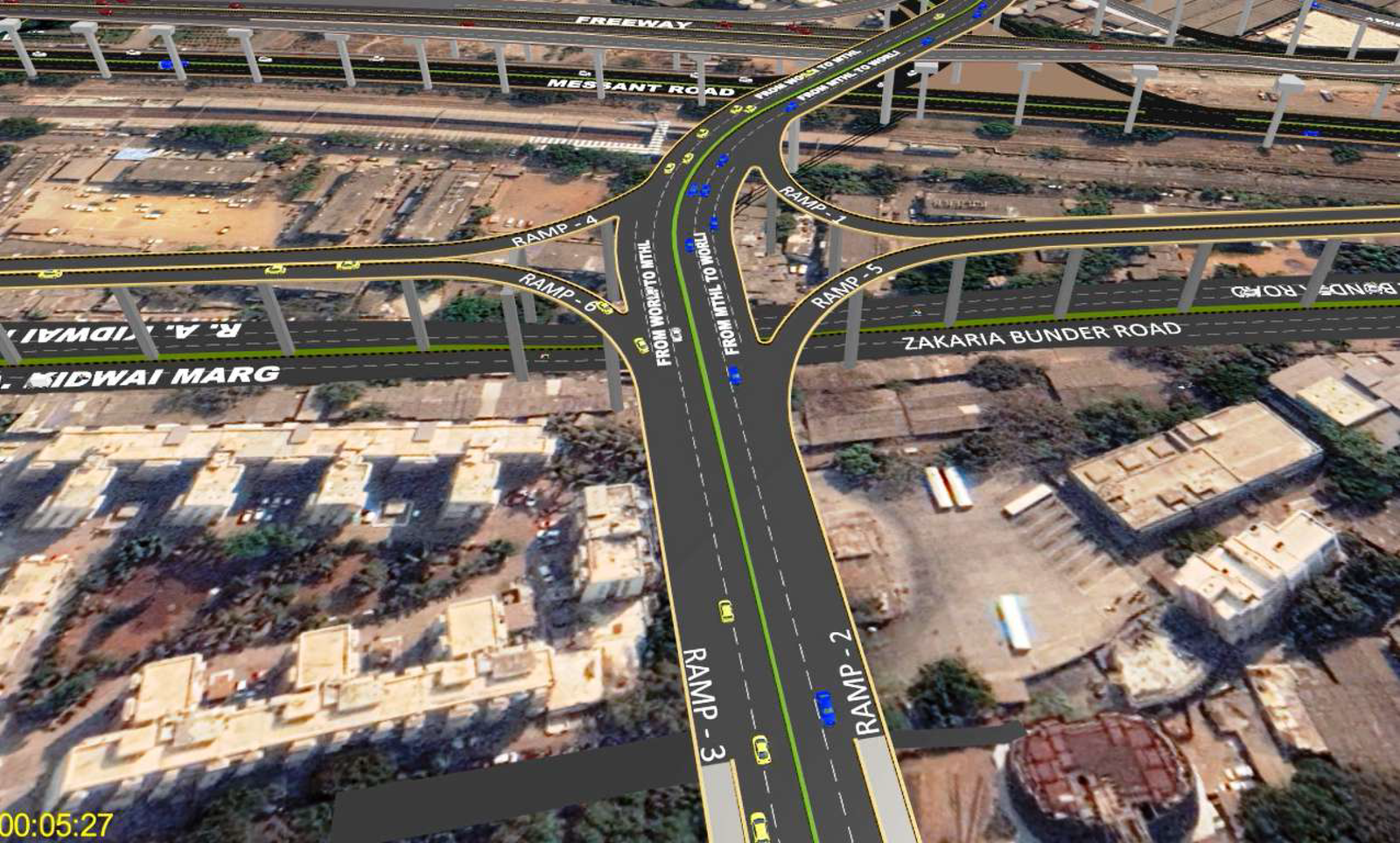
Reducing Commute Times & Connecting Key Destinations
An exciting feature of the Sewri-Worli Connector is its integration with the Mumbai Coastal Road project. This collaboration will further improve connectivity, creating a comprehensive network that enhances travel convenience for residents and visitors alike.
Once completed, the Connector promises to revolutionise commuting between Navi Mumbai and key destinations in South Mumbai, such as Nariman Point and the bustling financial hub of Bandra Kurla Complex (BKC). Travel times will be substantially reduced, providing a hassle-free journey for thousands of daily commuters.
The Sewri-Worli Connector is a testament to Mumbai’s commitment to modernising its transportation infrastructure. It represents a visionary step towards a more efficient, wellconnected, and dynamic metropolis, underscoring the city’s relentless pursuit of progress and urban development.
Forging Stronger Connections: Atal Setu To Mumbai-Pune Expressway Connectivity
The Atal Bihari Vajpayee Smruti Nhava Sheva Atal Setu project seeks to improve transportation connectivity. To complement the MTHL and ensure efficient traffic flow, MMRDA is extending it further by constructing an elevated corridor running from Chirle to Mumbai-Pune Highway on NH-348.
Easing The Load

The Atal Setu ends at Chirle on NH-348 which already has heavy traffic due to heavily loaded vehicles using this road to access the JNPT port. Diverting traffic moving toward Pune and Goa is thus essential. The success of this project largely depends on a proper dispersal system on either side of the Atal Setu.
The answer, is a six-lane, 4320 m elevated corridor from Chirle to Gavan Phata and a sixlane, 2842 m elevated corridor from Palaspe Phata to Mumbai-Pune Expressway.
This project serves as a crucial link, enhancing transportation connectivity, reducing travel time, and fostering economic growth in the area. By creating a streamlined and efficient transit system, the MMRDA is working towards a more sustainable and environmentally friendly future for the Mumbai Metropolitan Region.
Strengthening Links: The SantacruzChembur Link Road (SCLR) Extension
To reduce traffic congestion in BKC and Kurla areas and to connect the Eastern and Western Expresways through the existing Santacruz-Chembur Link Road (SCLR), MMRDA is constructing SantacruzChembur Link Road Extension in collaboration with the State Government.
A Work In Progress

The first phase of this in-progress project is building a 5.9 km elevated road. This double-decker bridge will complement the existing SCLR bridge. MMRDA started fabricating segments for the iconic, cable stay structure at Vakola Junction. The 215 m long bridge is India’s first sharp curvature span with an orthotropic steel deck supported by stay cables, which will pass over the Western Express Highway. This bridge will provide connectivity from Vakola Nallah to Panbai International School. The SCLR Extension will connect BKC to the Eastern Express Highway and Western Express Highway through an elevated corridor, covering four junctions: BKC Junction, University Junction, Dr Ambedkar Chowk Vakola Junction and MTNL Junction.
Revolutionising Water Management: The Surya Water Supply Project
The Vasai-Virar and Mira-Bhayander subregion in the western subregion of the Mumbai Metropolitan Region is experiencing remarkable urban growth, far surpassing the typical rates seen in other cities in India, with a staggering growth rate of nearly 50%. However, this rapid development has led to a pressing issue of water scarcity in the area.
To address this critical problem and improve the lives of citizens, the Mumbai Metropolitan Region Development Authority is undertaking the Surya Regional Water Supply Project, in collaboration with 403 D.L. Ltd. This project aims to alleviate the water shortage by establishing a daily water supply capacity from the Surya Dam in Vikramgad taluka. The water will be conveyed to the Suryanagar water treatment plant through the Kavadas pick-up where it will undergo purification and then be distributed to Kashidkopar in Vasai-Virar town and Chene reservoir in MiraBhayander town through underground pipelines, using gravity for transportation.

Keeping Purity At The Core
The process of purification begins with the extraction of raw water from the Kawadas pick-up weir, which is located downstream of the Surya Dam in Vikramgad Taluka. In order to perform this vertical turbine pumps will be utilised to lift the raw water from the intake structure. The water will then be conveyed through an underground pipeline to the Water Treatment Plant situated in Suryanagar, where it will undergo necessary treatment. The water gets treated by passing through a cascade aerator, which will oxidize the iron in it by reducing dissolved gases. Subsequently, the water will be directed to the filter house via the reactor clarifier units for further treatment. Finally, once the treatment is over, it will be transferred to the Break Pressure Tank (BPT) for distribution.
The water purification centre will be able to provide clean and pure water to the residents, significantly improving the water situation in the area. The water treatment plant will have a capacity of approximately 418 dl, and it will supply 185 dl liters of water to the Vasai-Virar City Municipal Corporation and 218 dl liters to the Mira-Bhayander Municipal Corporation. To achieve this, around 88 km of pipelines will be extended.
The Power Of Tunneling To Safeguard Wildlife
In order to minimise disruption to wildlife and preserve the natural environment, the MMRDA has proposed the construction of underground tunnels to traverse the Mendhwankhind and Tungareshwar wildlife sanctuaries. These tunnels play a vital role in wildlife conservation efforts. Currently, 4.5 km of the tunnel have been excavated, with an internal finished diameter of 2.85 m.
The purpose of these tunnels is to channel water to the Chene Master Balancing Reservoir (MBR) and subsequently distribute it to the Mira Bhayandar Municipal Corporation (MBMC). To achieve this, a modern Tunnel Boring Machine (TBM) is being utilized for the excavation process. Additionally, two shafts, each with a diameter of 10 m, have been constructed at the inlet and outlet to facilitate the lowering of the TBM. To ensure efficient operation, the entire system will be automated using PLC Scada technology. This advanced technology will enable seamless control and monitoring of the tunnel system.
By implementing these measures, the MMRDA aims to strike a balance between urban development and environmental preservation. The construction of underground tunnels not only minimizes disturbance to wildlife but also showcases the authority’s commitment to sustainable infrastructure development.
Half Way There
The Surya Regional Water Supply Project is nearing completion, with the MMRDA recently successfully completing the initial trial run for Phase 1. This phase consists of a total of 59 km of pipeline, which has been charged up to Kashidkopar MBR.
By venturing into the realm of water supply, MMRDA is demonstrating its commitment to holistic development and improving the quality of life for the residents of the Western sub-region. This initiative not only showcases the organisation’s versatility but also highlights its dedication to tackling critical challenges faced by urban areas.
Solving The Transit Puzzle With The Metro
The MMRDA is undertaking the ambitious task of developing a Metro rail service spanning approximately 337 km within the Mumbai Metropolitan Region (MMR). The existing suburban rail system is strained, and expanding roads and rail networks face contraints. To address these challenges and offer an alternative transport system, MMRDA is creating the Metro rail network, which aims to reduce hours of travel into mere minutes.
The Metro network comprises 14 lines (including Metro Line 3) to cover MMR, with the recent inauguration of Metro Line 2A and 7 in 2023, forming the first Metro network of the region. The primary objective of this mass rapid transit system is to alleviate traffic congestion and pollution while complementing the existing overcrowded railway network. As of September 2023, the Metro has already seen a staggering 5,05,22,330 passengers. The highest recorded ridership was on July 26, 2023, with 222,290 passengers, proving that even during the monsoon, the Metro is becoming the preferred way to travel. “Mumbaikars are increasingly choosing the metro as their preferred mode of transportation, and witnessing a 5% growth every month is a significant achievement. It is commendable that 40% of our passengers have opted for the Mumbai One Card, reducing the reliance on paper-based QR tickets. We are continuously working towards introducing various ticketing options to further enhance the convenience of our commuters,” said Dr Sanjay Mukherjee, CMD of MMMOCL & Metropolitan Commissioner. Visualisation of the Metro Line 2B Zero Bridge
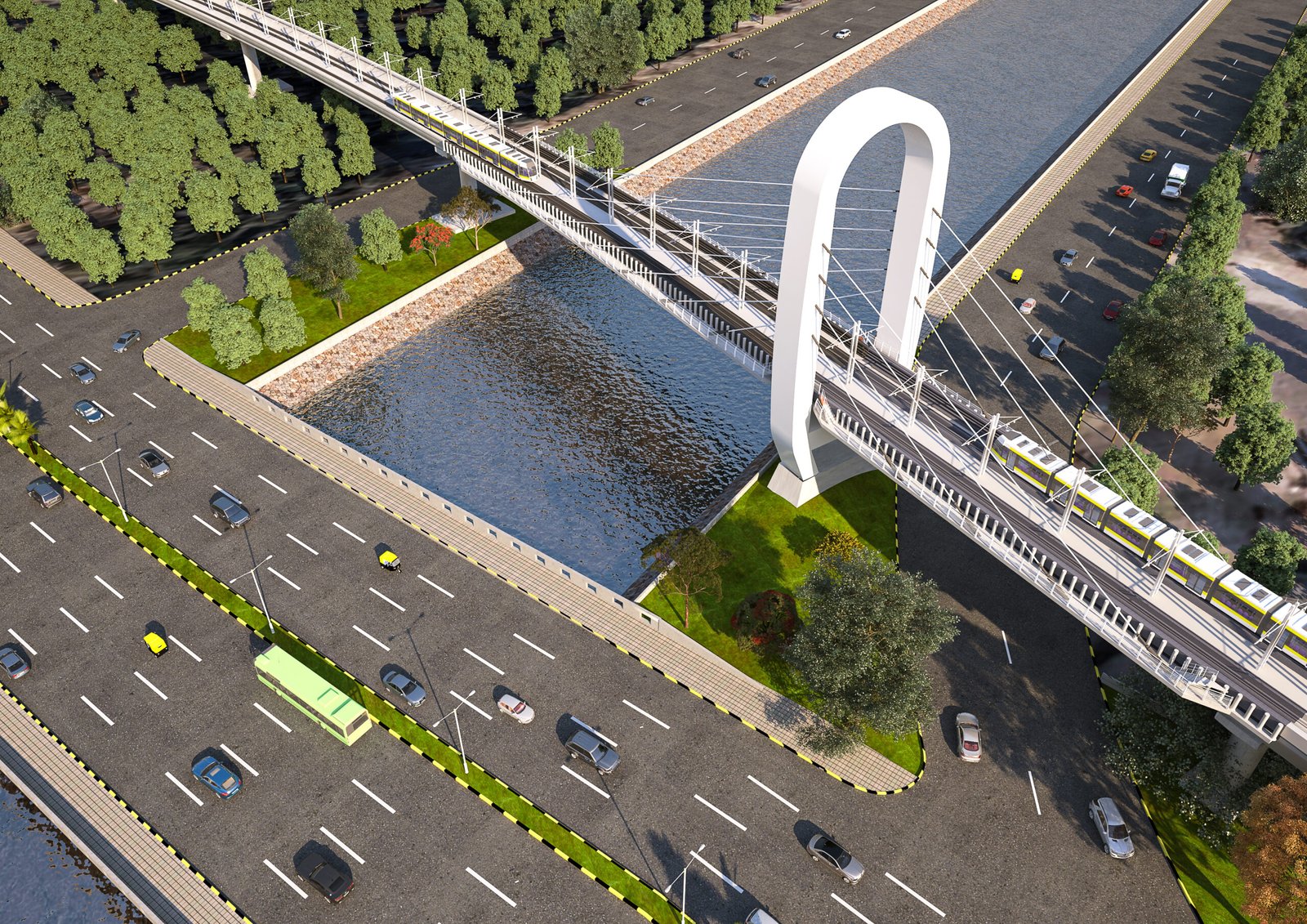
Overcoming Obstacles To Transform Mumbai’s Transportation Landscape
Developing a Metro system in a densely populated and complex city like Mumbai comes with its challenges, including dealing with uncertainties, unknown utilities, unplanned development, and heavy crowding. However, MMRDA’s highly equipped team is dedicated to overcoming these problems and successfully executing the project. The development of the Metro rail network is poised to transform Mumbai’s transportation landscape, providing a modern and efficient mode of travel, reducing traffic congestion, and contributing to a greener and more sustainable urban environment.
On Track!
Line 2B (DN Nagar-Mandale): This route could cut down travel time by 50-75%. It connects the Eastern and Western suburbs of Mumbai, linking with Metro Route 2A (Dhaisar-DN Nagar), Metro Route 3 (Colaba to Seepz), Metro Route 4 (Wadala to Kasarwadvali and the Monorail. It will offer improved connectivity and communication for commercial and Government institutions, as well as, important geographical areas in the city. Residents of Andheri (W), Vile Parle (W), Santacruz (W), Bandra (E/W), Kalanagar, BKC, Kapadia Nagar, Nehru Nagar, Kurla, Chembur, Mankhurd and Mandale are to benefit the most from this route.

Line 4 & 4A (Wadala-Kasarvadavali-Gaimukh): This route will be able to cut down travel time by 40-50% as compared to other modes of transport. It connects with Bhakti Park via the Monorail and Metro Route 11, Siddharth Colony via Metro Route 2B, Gandhi Nagar via Metro Route 6, Kapurbavadi via Metro Route 5 and Gaimukh via Metro Route 10. The route will be extended at both ends to improve connectivity with CSMT. This route is set to simplify and travelling from Thane to Mumbai and vice versa.
Line 5 (Thane-Bhiwandi-Kalyan): With this route, you can now travel from Thane to Kalyan in 30 mins. It acts as a link between Metro Route 4 (Wadala to Kasarwadvali and the proposed Metro Route 12 (Kalyan to Taloja). It will make travelling so much easier for residents of Thane, Bhiwandi and Kalyan.
Line 6 (Swami Samarth Nagar-Vikhroli): Improving East-West connectivity and simplifying travel while offering rail-based facilities to foster commercial, Government and geographic development is the goal of this route. It links Infinity Mall via Metro Rute 2A, JVLR via Metro Route 7, Seepz Village via Metro Route 3 and Kanjurmarg (W) via Metro Route 4.
Line 7A: (Andheri (East)-Chhatrapati Shivaji Maharaj International Airport): The primary objective of this route is to reduce traffic congestion and boost the economy. It connects to pivotal points and apart from reducing travel and saving almost 30-40 mins for commuters, it is poised to offer faster and safer transportation, boost employment opportunities, reduce fuel consumption and improve air quality.
Line 9 (Dahisar(E)-Mira Bhayandar): This route is set to provide a safe and efficient mode of transport, saving at least 30-40 mins on time. Reducing traffic congestion is the primary goal, but the increase in use of public transport will also help reduce the costs of road construction and maintenance. It will link with Metro Route 10 at Shivaji Chowk, allowing for continuous travel.
Line 10 (Gaimukh-Shivaji Chowk): This route links with Metro Route 4A at Shivaji Chowk, enabling continuous travel and improving connectivity for the Thane-Ghodbunder area.
Line 12 (Kalyan-Taloja): This route will link with the Navi Mumbai Metro Line to offer better connectivity between Navi Mumbai and the Kalyan-Dombivali area. It is set to save 45 mins on travel time and provide a safe and efficient mode of travel, helping citizens stay connected and be more mobile.
Saving On Time: Travel From The Freeway To The Coastal Road In Just 10 mins With The Orange Gate Tunnel
The MMRDA has once again presented a groundbreaking solution to a prevailing issue. They have meticulously devised plans to construct Mumbai’s first-ever urban underground road tunnel project. This tunnel will connect Orange Gate and Marine Drive in South Mumbai, and is a significant infrastructure development aimed at addressing the issue of traffic congestion. Not only will this project improve connectivity between the east and west coast of Mumbai through the Eastern Freeway, Atal Setu, Coastal Road, and the Bandra Worli Sealink, but it will also provide a signal-free route.
Laying The Blueprints
Currently, the city has two road tunnels. One is a part of the existing Eastern Freeway, passing through a mountain, while the other is a part of the upcoming coastal road project, passing below the sea. Both of these tunnels have been constructed through a greenfield alignment. However, the Orange Gate to Marine Drive tunnel will pass below the urban roads, which experience heavy daily traffic. Interestingly, this alignment will also pass beneath the lifeline of Mumbaikar’s railways, metro, and utilities.

The traffic congestion in south Mumbai, particularly around Orange Gate has become a challenge for the Mumbai Port Trust and the Main Post Office square on P D’ Mello Marg. Furthermore, with the upcoming Mumbai Trans Harbour Sea link (MTHL) connecting JNPT, the congestion is expected to increase. Therefore, this project is crucial in addressing these issues. The MMRDA has selected Larsen & Toubro as the contractor for this project, at a contract cost of ₹77.65 billion ($1.05 billion). The project will include the construction of a 6.51km underground tunnel and other necessary auxiliary works.
Creating Exquisite Results With Well-Planned Details
Officials have announced that each tunnel will boast an impressive 11 m inner diameter, providing ample space for 2+2 traffic lanes, 1+1 emergency lanes, and pedestrian walkways. The left-side tunnel will gracefully pass beneath the seaway, emerging once again after B D Somani Chowk. To facilitate vehicular access, the project will involve the construction of a viaduct at Orange Gate, as well as open cuts and access roads on both sides of the corridor.
The paramount concern throughout the planning of this project has been the safety of the underground Metro Line 3. To ensure that the tunnel does not interfere with the metro rail or the foundations of high-rise buildings, it will be constructed at a depth of approximately 40 m from the ground level. Safety measures are paramount, given the project’s proximity to heritage sites and densely populated areas in South Mumbai. Once this project is completed travel time between eastern and western parts of Mumbai will be reduced. Congestion on Sardar Vallabhbhai Patel Road will also be reduced. Furthermore, this underground road tunnel will facilitate seamless traffic flow between key locations, such as the Sewri-Worli connector, Atal Bihari Vajpayee Smruti Nhava Sheva Atal Setu, Eastern Freeway, and Bandra-Worli Sea Link. It will also provide faster connectivity for South Mumbai traffic to Navi Mumbai and other regions, as local traffic can also utilize the tunnel near the Marine Drive and Orange Gate areas. With a strategic approach, these ambitious projects have been carefully designed to complement one another and effectively address the issue of traffic congestion. The ultimate goal is to provide citizens with a multitude of transportation options within the region.
Game-Changer: The Environment Friendly Borivali-Thane Tunnel
The MMRDA is taking on an ambitious project to ease traffic congestion between Thane and Borivali with tunnels. The project involves the construction of two separate tunnel roads, each with two lanes and an emergency lane. The construction of the tunnel road will significantly reduce travel time by approximately one hour in travel time between Thane and Borivali.
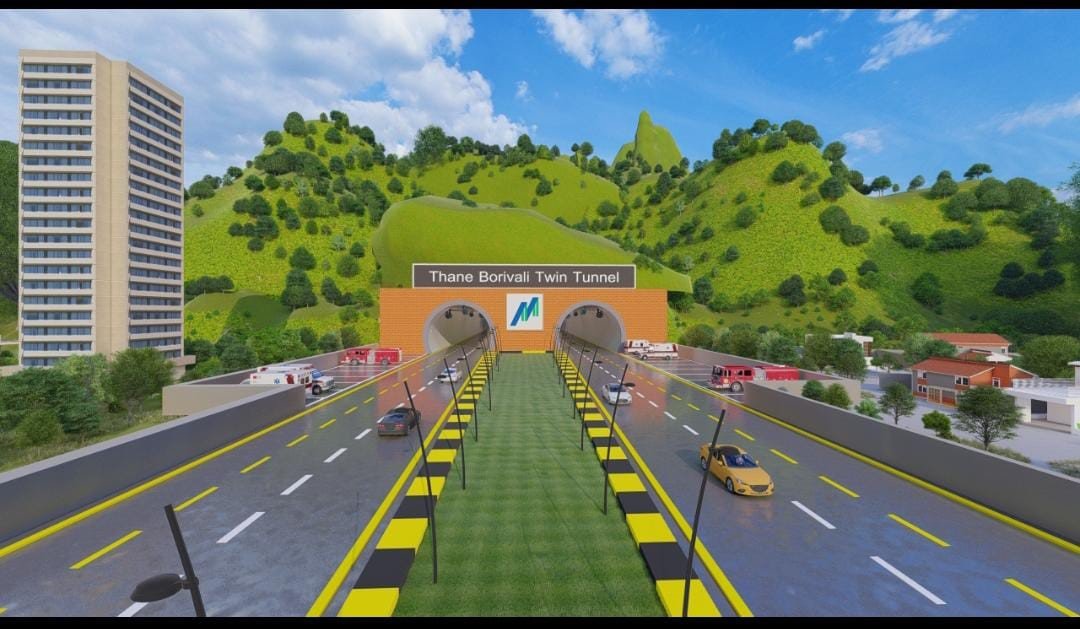
The Twin Tube Tunnel Road is a proposed highway tunnel road with two lanes in each direction, passing through the Sanjay Gandhi National Park. The total length of the tunnel road will be approximately 10.25 km, with an additional 1.55 km for the approach road. Each tunnel road will have a diameter of 13.05 m, spanning a total length of 11.8 km.
Safety First
To ensure the safety and convenience of riders, a dedicated ventilation system will be installed throughout the tunnel, along with cross passages every 300 m. Additionally, safety measures such as fire extinguishers, smoke detectors, LED lights, and sign boards will be strategically placed along the tunnel.
Three Distinct Phases
The construction of the Twin Tube tunnel road will be divided into two civil packages and one ITS package. Civil packages 1 and 2 have already been awarded through a tender process, with M/S. Megha Engineering & Infrastructure Ltd. being the contractor. The estimated cost of the project, including land acquisition, is around ₹16,600 Cr. The plan is to use four Tunnel Boring Machines (TBM) In order to complete the construction within five years. Geotechnical investigation works have already commenced under the supervision of the contractor’s team.
The construction of the Twin Tube tunnel roads requires approximately 46.57 ha of land, with around 35.54 ha being forest area controlled by the Government of Maharashtra. Therefore, obtaining wildlife clearance is essential to begin the construction work. The acquisition of this clearance is fantastic news, as the proposed tunnel road will bring numerous advantages to the people of Maharashtra. The construction of the tunnels beneath the Sanjay Gandhi National Park demonstrates a commitment to minimizing the project’s ecological impact.
Taking The Road Less Travelled
One of the major benefits of the Twin Tube is its significant reduction in travel time between Thane and Borivali. Specifically, the tunnel road shortens the distance by 12 km, allowing travellers to save approximately one hour. This breakthrough is crucial as it enables people to save both time and money on fuel costs every time they commute between Thane and Borivali. Additionally, the new tunnel road will establish a direct connection between Thane Ghodbander Road and Western Express Highway on the Borivali side.
Bypassing Traffic Woes: The Airoli-Katai Naka Elevated Road
The Airoli-Katai Naka tunnel plus elevated road is a prodigious new project by the MMRDA that will offer a smoother and shorter commuting experience for the travellers of Thane and Navi Mumbai by providing an additional road transportation option. This project seeks to alleviate the frustration of commuters travelling from Kalyan to Navi Mumbai, who often face traffic jams on routes passing through Mahape or Thane.
The completion of this transformative project will reduce travel time by approximately 30 minutes between two regions, making a significant difference for residents and businesses alike. The Airoli-Katai Naka tunnel is being executed in three wellplanned phases, each designed to enhance connectivity and improve travel efficiency.
The Three Phases
The first phase focuses on constructing a 3.43 km road that connects the Thane-Belapur Road to National Highway No. 4. The highlight of this phase is a cutting-edge 1.69 km twin tunnel, featuring three lanes in each direction and an additional lane for refuse. Alongside the tunnel, the rest of the stretch comprises a mix of elevated and conventional road sections.
In the second phase, the project takes a leap forward with the development of a 2.57 km fully-elevated road that seamlessly connects the Mulund-Airoli Bridge to the Thane-Belapur Road. This elevated section promises to enhance connectivity and provide a smoother travel experience for commuters.
The third and final phase envisions a 6.30 km fully-elevated road linking National Highway No. 4 to Katai Naka on the Kalyan-Shilphata Road. This phase is set to elevate the entire transportation network in the region, catering to the needs of commuters.
The Benefits Of This Project
This project will not only alleviate heavy traffic on the congested Shilpata road, but it will also enhance connectivity between rapidly expanding areas like Kalyan-Dombivli and Navi Mumbai. The impact of this ambitious endeavor is bound to be profound, benefiting countless commuters and businesses alike. It will usher in a new era of seamless connectivity and progress, leaving a lasting positive imprint on the lives of many.
The Road To The Future
To sum up, MMR’s problems have found a solution with the efforts of the MMRDA, resulting in an undeniable enhancement of the city’s charm. Each carefully crafted and deliberated project has been incredibly beneficial to the inhabitants of this city. By skillfully capturing the essence of MMR and translating it into visionary projects, the MMRDA has not only transformed the city, but also holds the power to shape our future. With endeavours ever so ambitious, MMRDA has propelled MMR’s infrastructure to remarkable heights. Thanks to MMRDA’s comprehensive plans, a promising future lies ahead for the people of Mumbai and beyond…
